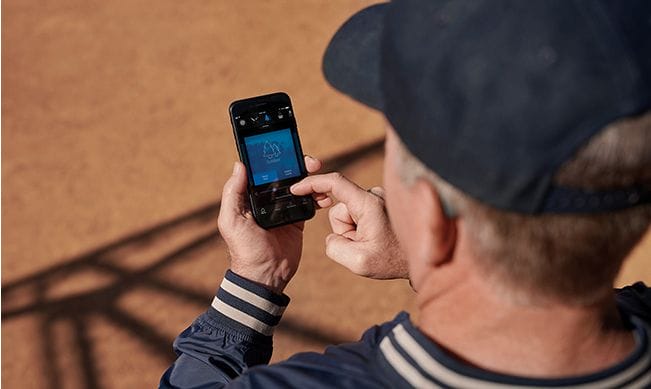Around 37.5 million adults in the United States report some trouble hearing, according to the National Institutes of Health (NIH). However, it is an undertreated condition with the NIH also estimating 28.8 million adults with mild to severe hearing loss could benefit from hearing aids. Thanks to ever-evolving technology, devices that improve hearing loss are more user-friendly than ever.
Of course, today’s hearing aids help people hear better, but technology also is revolutionizing the way people use their hearing aids. For example, people can now use them like a headset to enjoy music, take calls and more, simply by streaming sound directly from their mobile devices.
If you’re considering a hearing aid for yourself or a loved one, or are just intrigued by how technology is changing the future for those who experience hearing loss, consider these five technology advancements that are helping people connect and hear better:
- Rechargeable batteries. The tedious chore of changing hearing aid batteries is a thing of the past. Now you can have hearing aids with rechargeable batteries and portable chargers. These past few years, modern hearing aids that are rechargeable have gained a lot of popularity because they are easier to use and have comfortable features. Recharging at home is simple: an overnight charge is all they typically need to be ready again in the morning. Some models even feature batteries and chargers that can be ready to go another 8 hours on just 30 minutes of charge time.
- Direct streaming from mobile devices. Until recently, onlyiPhone users have been able to stream music or calls directly to their hearing aids. Now, using updated Bluetooth Low Energy streaming technology, people with hearing aids such as Beltone’s Amaze can stream audio directly from their compatible Android device for more than 12 hours while still preserving 24 hours of battery life before a recharge is needed. Previously, hearing aids that directly streamed from Android devices have relied on “classic Bluetooth, which can cut 24 hours of hearing aid battery usage in half after only 4 hours of direct streaming.
- More natural sound. The latest microprocessing technology means hearing aids deliver a clearer, fuller and richer sound experience in any listening situation. Now users can hear the textured tones that make everything from a dinner conversation to a quick joke to a theater performance more fulfilling. Technology is also able to help people manage situational changes, make conversations and ambient noise sound more natural and allow users to choose which sounds to focus on. The hearing aids can even make automatic adjustments to account for sudden loud noises.
- Smartphone apps make it easy. Hearing aid users can use smartphone apps to discreetly manage device functions, such as checking battery status and adjusting volume to using more advanced finetuning features that control speech focus, noise and wind filters. Some apps even offer a “find my hearing aid” feature.
- Tech-enabled customer care. Working with a hearing care professional is essential in treating hearing loss and maximizing the benefits of hearing aids, but it doesn’t mean you have to spend time trekking back and forth to your audiologist’s office. For example, Beltone’s Remote Care program enables users to connect directly with their hearing care professional via the HearMax app. After submitting a request, users can adjust their hearing aids with a simple tap on their phones without an office visit.
To learn more about the latest in hearing aid technology and find a hearing care professional, visit Beltone.com, or take a free online hearing test.
SOURCE:
Beltone








































